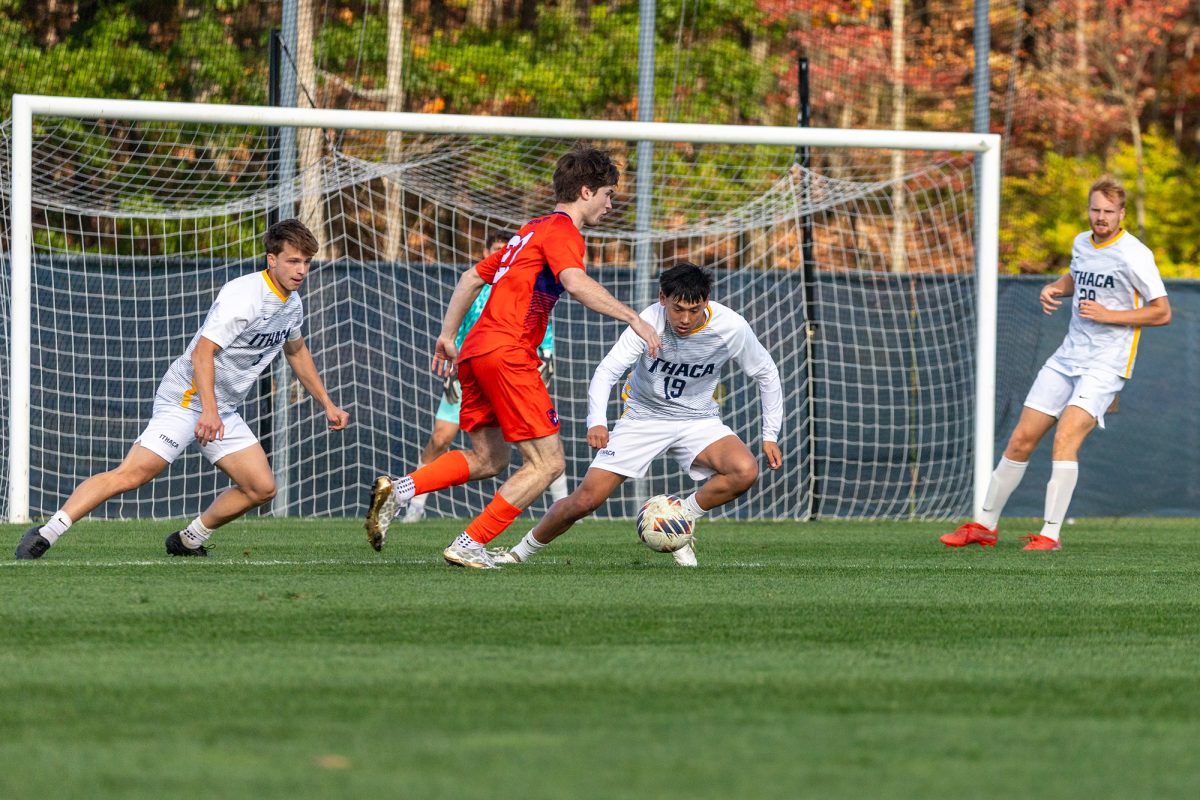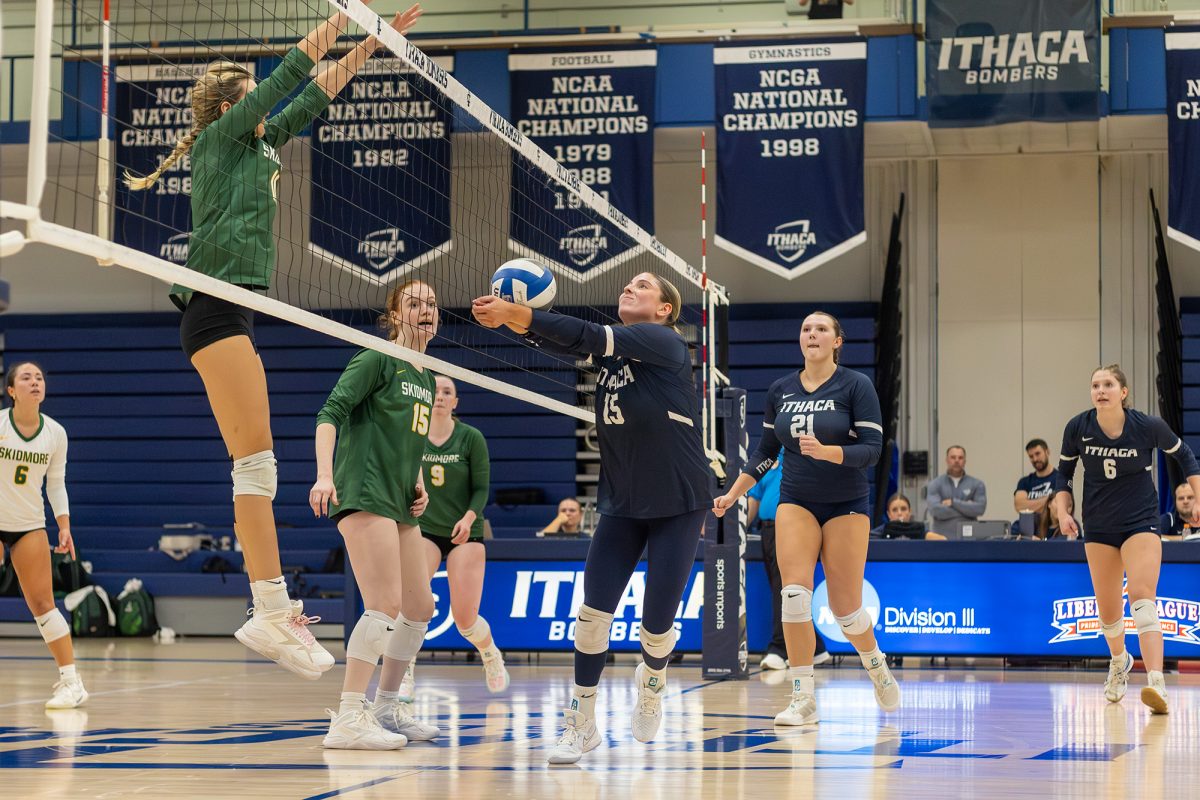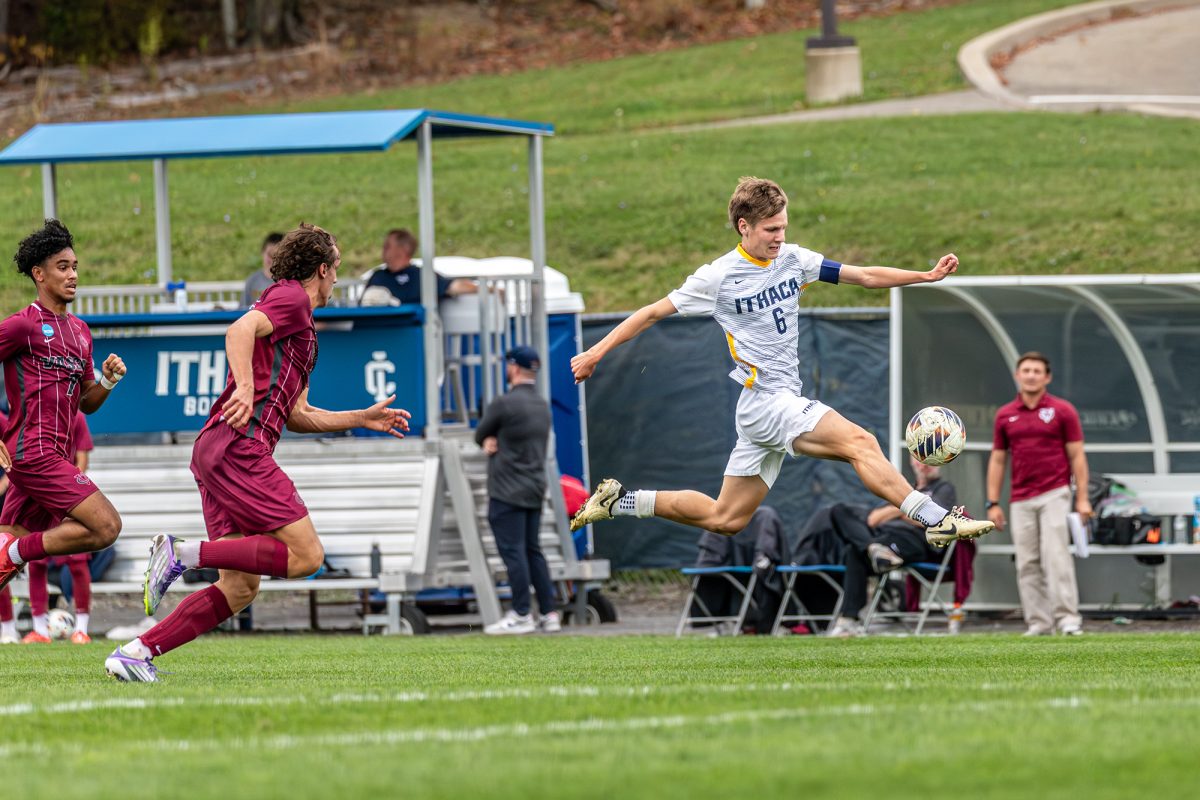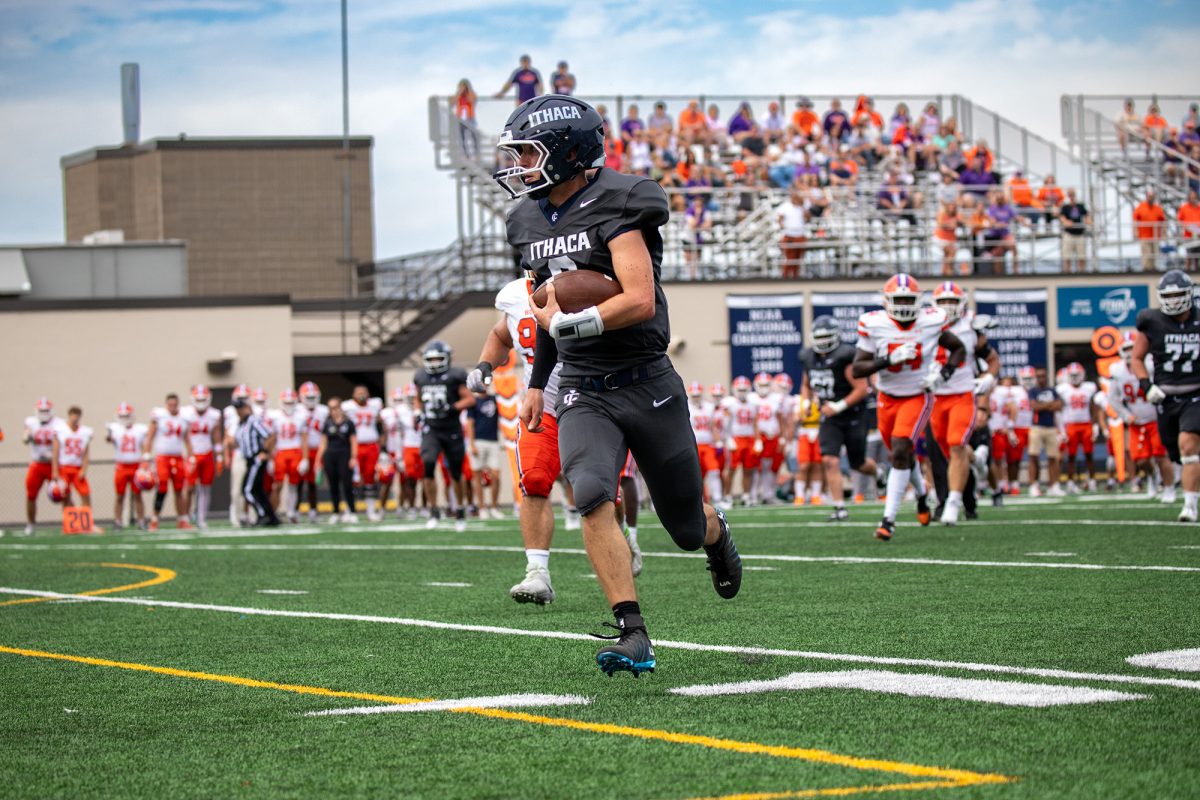The Bombers, who finished last year’s season ranked ninth in the country, opened up their season Saturday at the Cornell University Relays, but unlike most other collegiate sports, the track season opener is barely a season opener at all.
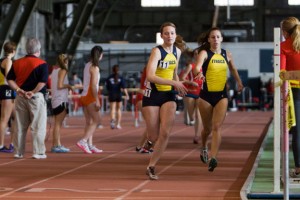
After the meet Saturday, which was not a team scored competition, the South Hill squad has a month and 11 days until they return to competition.
With such a long break in between meets, the Blue and Gold took a different approach to Saturday’s contest.
“Coach describes it as ‘practicing putting the uniform on,’” junior Kristen DeStefano, who competes in the pole vault and hurdles, said.
DeStefano said the meet is more of a practice than race situation.
“We have been working hard since returning in August, first with captains practices and then once official practices started, so [the meet is] a good gauge to see where we are at,” she said.
The meet almost divides the season in two for the South Hill squad. The pre-winter break portion of the season is used mostly as a training block, where athletes work on their events for the meets in January. Whether that means running repetitions around the 200-meter indoor track at Cornell or working on strength and conditioning in the weight room, preparation is key, senior Marcia McCord said.
“This meet is just a benchmarker, an indicator of what’s to come and what needs to be worked on,” McCord said. “For the most part, it’s fun. No hassle, no pressure, just competition.”
That relaxed attitude going into the meet certainly helped McCord, who set school records in the 300-meter dash and third in the 60-meter dash Saturday, running 40.41 and 7.77 seconds, respectively.
But once winter break comes, it is more difficult for athletes to continue the preparation they have been working on when they return home, DeStefano said.
“The break is hard because it limits the work you can put in on the details for the technical events like the pole vault, jumps and throws,” DeStefano said. “But we just need to put the effort into our workouts and continue lifting to stay in shape so when we get back we are ready to work on the finer points of the events.”
For many of the events, especially the longer distance events like the 5,000-meter run, the first meet shapes up to be one where athletes may be able to earn a championship bid early in the season.
With many distance runners coming directly from the cross-country season, an Eastern College Athletic Conference Championship or New York State Collegiate Track Conference, qualifying time could pay off later in the season.
Senior Kate Leugers was one of five Bombers to finish in the top 10 in the 5,000-meter run Saturday, posting a second-place finish and ECAC qualifying time of 17:53.70.
For athletes who post a championship time early in the year, the time off can help them then focus on other shorter events later to keep their legs fresh, senior Caitlin Campbell said.
“The break allows for distance runners to rebuild our mileage after tapering at the end of cross country,” she said. “Plus, we’re able to just concentrate on running since we don’t have to worry about school.”
The second part of the season is focused on tweaking and putting the finishing touches on certain events, preparing for the big meets after the team’s extended absence from competition.
With nine straight weeks of competition after their break, culminating in the NCAA Championships on March 11 and 12 at Capital University in Columbus, Ohio, the South Hill squad will have to be ready to race each week.
This grueling schedule with no bye weeks motivates the Bombers to keep in shape while at home during their time off.
In addition to their workouts over the next month, the athletes keep tabs on one another during break through phone calls, texts, e-mails or Facebook messages, Campbell said.
“We stay in touch to motivate and remind each other of our goals,” she said. “Our personal success relies heavily on each other and that doesn’t change over break.”


